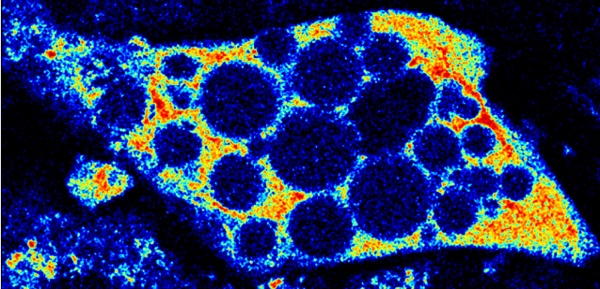The Role of Chance in Biomedical Imaging
The Role of Chance in Biomedical Imaging
Kyle Quinn

Dr. Chance has had a profound influence on a wide range of research in biomedical optics, chemistry, physiology, and medicine, which cannot be adequately summarized in a brief blog post. After his time as a student at the University of Pennsylvania, as well as stints at Cambridge University, MIT, and Stockholm, Dr. Chance joined the Penn School of Medicine as a faculty member. In the 1950s, he invented a dual-wavelength spectrophotometer, which he used to characterize the different metabolic states of mitochondria through quantitative measurements of NADH and flavoprotein autofluorescence. This fundamental research on how our cells produce ATP through oxidative phosphorylation, and respond to substrate and oxygen limitations, has been critical to assessing mitochondrial function and disease. He later discovered that Complex III of the electron transport chain generates reactive oxygen species, once again providing fundamental insight into cell biology and influencing a variety of age-related research. In the 1970s, his attention turned to magnetic resonance spectroscopy and diffuse optics to assess cell metabolism and blood oxygenation deeper within tissues. Meanwhile his seminal work on NADH and flavoproteins, launched an entire field of research that has expanded over the decades to explore the use of these intrinsic fluorophores for detecting and monitoring cancer, ischemia, hypoxia, apoptosis, and differentiation in a variety of cells and tissues.
Simply put, my postdoctoral research over the last 3 years would not resemble what it is today, without the contributions of Dr. Chance. As a PhD student studying injury biomechanics in the Bioengineering Department at Penn, I had heard stories of a remarkable biophysics professor and Olympic gold medalist, who was in his 90s, but still actively involved in research in the School of Medicine. Sadly, I never had an opportunity to meet Dr. Chance, and did not fully understand his vast and influential research accomplishments until after I had graduated in 2010 and began studying biomedical optics at Tufts University. Yet, I think of him often, still re-reading his papers to gain new insights and always referencing his early work in my papers and presentations on cell metabolism. As I look at the BIOMED program, he has influenced so many of the research areas and individuals attending the conference, and I am certain his legacy will continue to influence and inspire scientists for decades to come.
